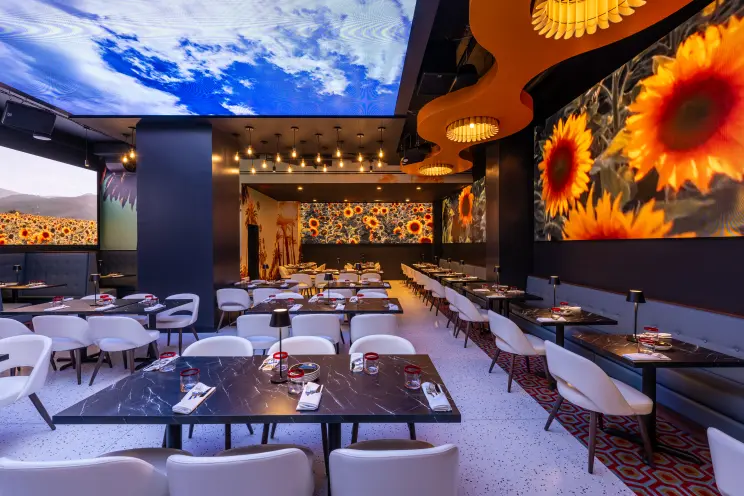
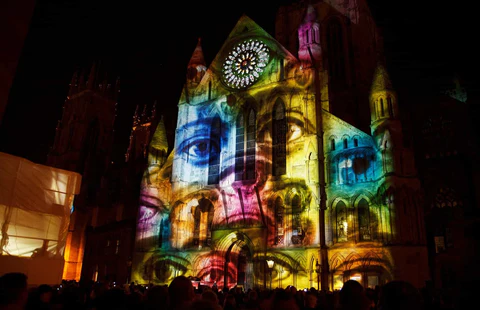
In the world of attention-grabbing visuals, there are a lot of ways to stop people in their tracks. Two technologies in particular have been showing up in everything from retail windows to live events: transparent display vs. projection mapping.
At first glance, they might seem like they do the same thing—deliver bold, immersive content in cool, futuristic ways. But once you dig a little deeper, you’ll find they’re built for very different goals, environments, and experiences.
So if you’re trying to decide between a transparent screen or a projection-mapped setup for your next campaign, activation, or storefront, here’s a friendly breakdown to help you figure out what makes the most sense.
Transparent LED displays are, quite literally, see-through screens. They let you project digital content—videos, motion graphics, text—while still allowing light and visibility through the screen itself. These are often used in storefront windows, showrooms, and glass walls where you don’t want to block the view but still want to tell a story or catch attention.
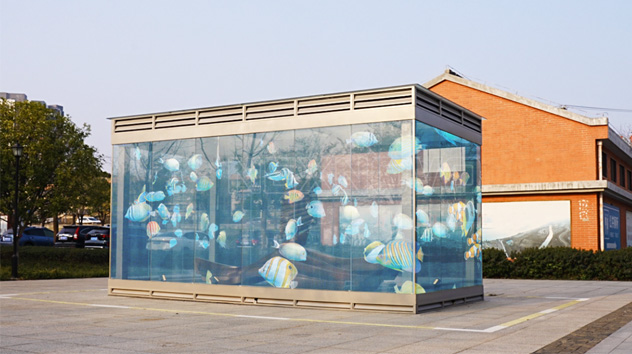
On the flip side, projection mapping is all about using projectors to cast visuals onto 3D surfaces—think buildings, cars, mannequins, or curved walls. It turns everyday objects or environments into living, moving canvases. If you’ve ever seen a castle “come to life” at a theme park or watched a product seem to explode with visuals during a launch event, that was probably projection mapping at work.
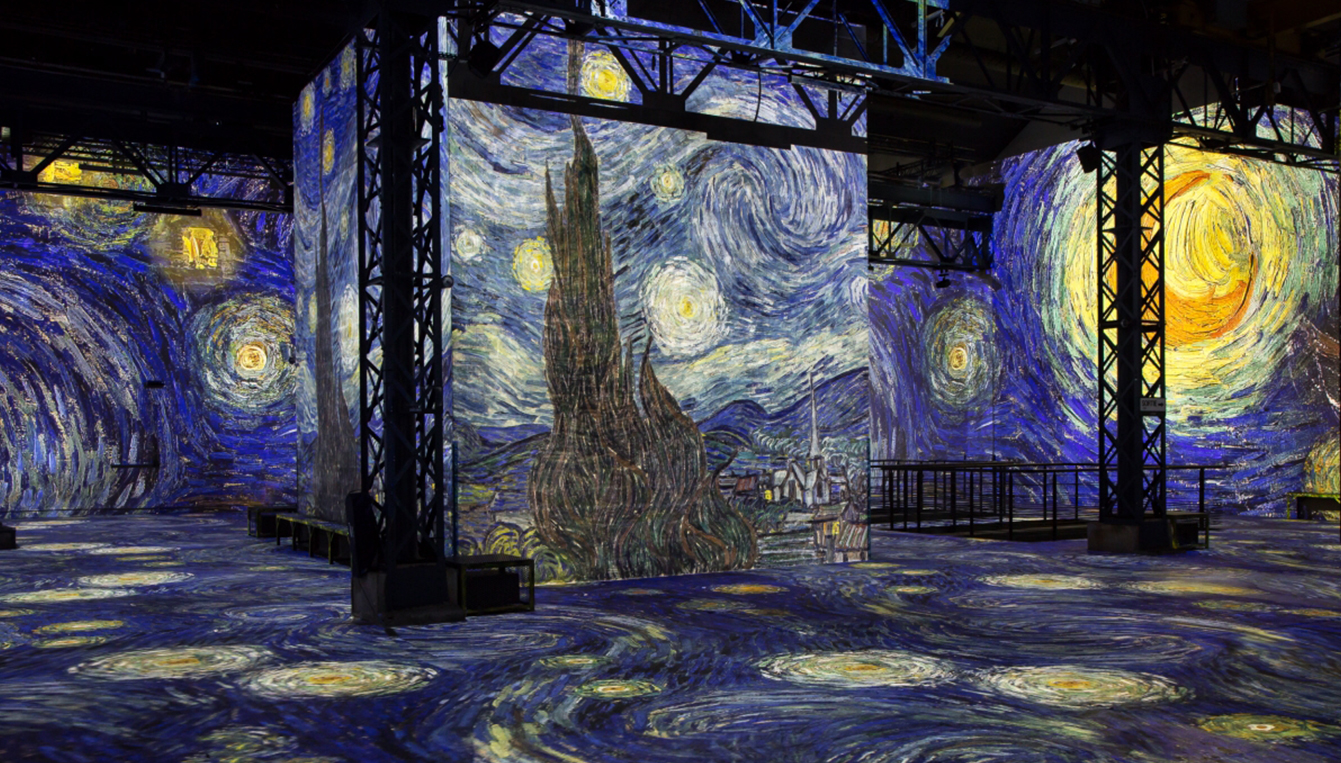
Both are visually impressive. But the real question is—which one fits your use case better?
Transparent displays are having a serious moment in retail, hospitality, and events—and for good reason. They’re bright, modern, and let you do things like run an ad on your glass storefront without blocking the view of your products.
They’re especially great for:
Another big plus? They’re easy to manage. Most transparent LED displays are powered by a CMS (content management system) that lets you schedule, update, and control content remotely. That means no more running around with USB sticks or reconfiguring hardware every time you want to change a promo.
And in terms of daylight visibility—transparent LED screens are built for it. They’re bright enough to cut through sun glare, which makes them perfect for windows and other open, well-lit spaces.

Projection mapping is a whole different vibe. It’s dramatic. It’s cinematic. It’s built to wow.
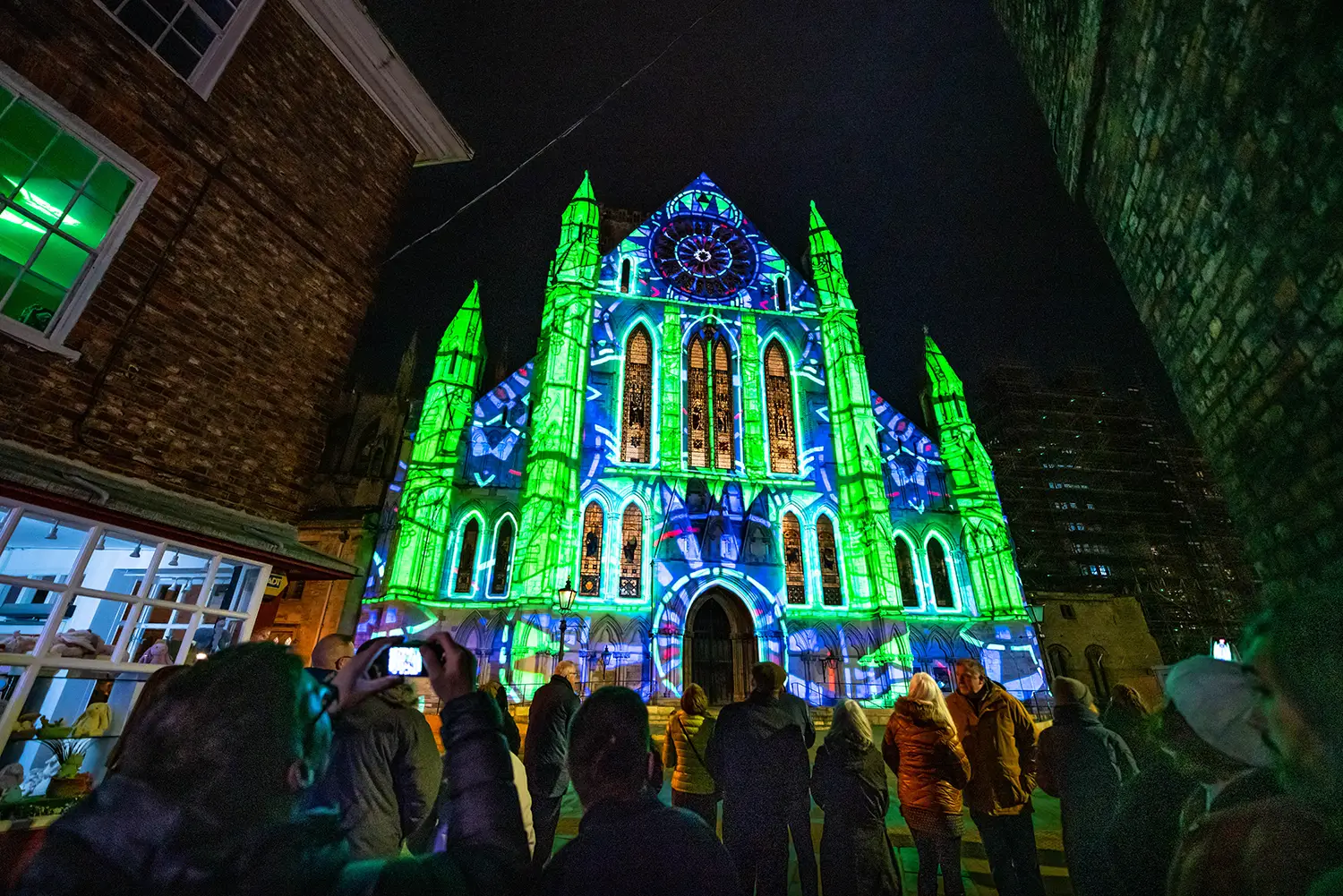
If you’re creating a performance, an art installation, or a large-scale event, this tech can turn almost any surface into a visual experience. You can map visuals onto a stage set, a sculpture, or even a sneaker for a product launch. It’s immersive in the truest sense.
The catch? It usually needs a darker environment to work well. Bright lights (or daylight) can wash out the projections. Also, the setup takes time—projectors have to be carefully placed and calibrated, and the software must align visuals with the unique contours of the surface. For a single night or a controlled indoor space, that’s totally doable. For an ongoing, everyday retail display? Not so much.
Here’s a quick cheat sheet:
| Feature | Transparent Display | Projection Mapping |
|---|---|---|
| Works in daylight | ✅ Yes | 🚫 Not really |
| Easy to install | ✅ Plug-and-play panels | 🚫 Complex calibration |
| Reusable | ✅ Yes, great for recurring use | ⚠️ Better for one-offs |
| Interactivity | ✅ Can be touch or motion-enabled | ⚠️ Possible, but harder |
| Wow factor | ✅ Sleek and modern | ✅ High-impact spectacle |
| Best for | Retail, showrooms, events | Art shows, performances, short-term activations |
If you’re working with a storefront window, glass wall, or want something flexible and reusable for multiple campaigns, go with a transparent LED screen. You get brightness, visibility, and easy content control. And if you’re working with someone like SeeThruDisplay, they can help customize the setup so it blends perfectly with your space.
If you’re creating a one-time experience, an immersive installation, or something that really leans into art and theater, projection mapping might be the better fit—just budget some time (and money) for the setup and production.

Ultimately, it’s less about which technology is “better,” and more about what you’re trying to achieve.
If you need something reliable, eye-catching, and easy to manage day-to-day? Transparent wins.
If you’re after a single moment of visual magic? Go projection.
Either way, it’s exciting to have tools that can turn any surface—glass or otherwise—into a story worth watching.